Categories
- animatronics (12)
- apple (11)
- arduino (179)
- art (41)
- articles (121)
- artificial intelligence (11)
- automation (421)
- avr (205)
- bitcoin (3)
- breadboard (9)
- cameras (57)
- cars (26)
- cell phones (28)
- clothing mods (21)
- console mods (26)
- dangerous (94)
- desktop mods (24)
- embedded (5)
- flying things (54)
- fpga (22)
- gaming creations (108)
- interface (225)
- internet (17)
- laptop mods (6)
- lasers (22)
- linux (7)
- magnetic (3)
- medical (12)
- microcontrollers (51)
- misc projects (152)
- msp (12)
- music (124)
- pic (90)
- projects (23)
- pyroedu (76)
- raspberry pi (26)
- robots (312)
- security (36)
- sensors (307)
- software (200)
- solar (19)
- stamp (9)
- tools (149)
- tutorials (98)
- Uncategorized (45)
- usb (44)
- wireless (256)
Sponsors

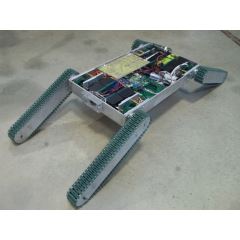
Posted November 6, 2014 by Chris
"The purpose of the prototype was to demonstrate the feasibility of a small, highly maneuverable search and rescue robot. As such, the completed prototype was successful. Capabilities include a ground speed of 10 inches per second, battery life of 50 minutes, wireless range of between 50 and 150 feet, weight of 14.5 pounds and the ability to climb stairs."

Posted October 30, 2014 by Chris
"It all started when I found a ‘Power wheels’ style toy at a thrift shop for $20. As you can see I’m a little excited about it. It wasn’t working when I bought it as there were wiring issues and a bad battery. This wasn’t too much of a concern to me because I planned to overhaul it anyways. It also started out as an Audi; being a BMW guy I figured I would change that too."
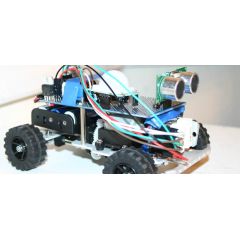
Posted October 19, 2014 by Chris
"For the past weeks I have had this robot to play with. Today I added some additional intelligence to it, and decided to post it here as a finished project…One extra motor was added to the code, I etched a new PCB for the L298 board so it took up less space, and attached it all to a robot chassis."

Posted October 17, 2014 by Chris
"Software Defined Radio (SDR) has finally reached a much broader mass of people, who wanted to play with RF technology, but didn’t find the time or resources to learn all necessary skills, to build a hardware based radio. Thanks to the work of the GNU-Radio and OsmoCom developer crowd, this barrier is finally gone and everyone can, more or less, directly access, what the antenna receives."

Posted October 16, 2014 by Chris
"Wearable computers and head-mounted displays (HMDs) are in the press daily. Why now? While the basic technology has existed for decades, only recently have these devices become practical and desirable. Using consumer, professional, and ‘maker’ devices, this exhibit demonstrates four challenges along the road to making a consumer wearable computer: power and heat, networking, mobile input, and displays."
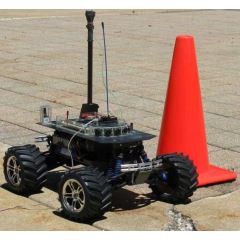
Posted October 14, 2014 by Chris
"Purpose and Goals: during October, 2007, I received an Email from Steve Hassenplug. Steve was trying to get the Chicago robot club (Chibots) to hold an annual RoboMagellan contest. He needed some more entries, so I committed to build a robot for the spring, 2008 competition."
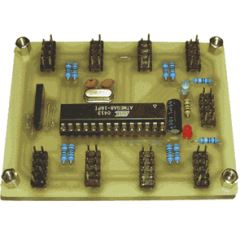
Posted October 11, 2014 by Chris
"8-channel approach to IR detector sensor circuit is realized with ATmega8 microcontroller. I2C bus (TWI, SMBus) are measuring through the obstacle detection, designed for mobile robot. Approach reflects the beam of infrared light detector circuit based on monitoring works."

Posted October 6, 2014 by Chris
"On the transmit side, I’m having a an ATMEL AVR microcontroller (ATMega48) transmit data (every number from 0 to 200 over and over) wirelessly using 433mhz wireless modules. The PC receives the data through the microphone port of a sound card, and a cross-platform Python script I wrote decodes the data from the audio and graphs it on the screen."
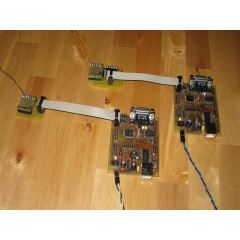
Posted September 16, 2014 by Chris
"This project shows how to do wireless communication with the RFM12 tranceiver modue in combination with a PIC microcontroller. The RFM12 is a low costing ISM band FSK transceiver module. There are different module variants available which support different frequency bands: 315/433/868/915MHZ."

Posted August 26, 2014 by Chris
"The stepper motors are 6 wire unipolar steppers that are controlled by a TI SN754410NE H-Bridge that is connected to a PIC 16fF84 microcontroller. The PIC sends pulses to the H-Bridge that move the motor in 1 degree/step increments in either a clockwise or counter clockwise direction. An infrared detector is used to sense IR pulses sent by the TV remote control."






